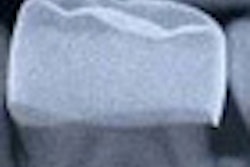Atraumatic restorative treatment (ART) is a cost-effective option for treating caries in older adults, especially those in nursing homes or who are housebound, according to a new study in Community Dentistry and Oral Epidemiology (August 19, 2013).
ART is a minimally invasive tooth procedure that involves removing softened carious enamel and dentine, using only hand instruments and then restoring the resulting cavity with an adhesive restorative material. Although developed for use in the less industrialized parts of the world, ART has gained acceptance in developed countries as part of the minimum intervention philosophy. At present, the restorative material of choice for ART is glass ionomer cement.
Population surveys indicate that older individuals are keeping their teeth longer and are a higher caries risk group, noted the study authors, from University College Cork Dental School and Hospital. They compared the cost-effectiveness of ART and a conventional technique for restoring carious lesions as part of a preventive and restorative program for older adults.
They selected 82 patients with carious lesions and randomly assigned them to receive either ART or conventional restorations. Treatment costs were measured based on treatment time, materials, and labor. For the ART group, the cost of care provided by a dentist was also compared with the cost of having a hygienist to provide treatment. Effectiveness was measured using percentage of restorations that survived after a year.
The 82 patients received a total of 260 restorations -- 128 ART and 132 conventional restorations; 91.1% of the restorations were on one surface only. After a year, 252 restorations were assessed in 80 patients. The average cost for ART and conventional restorations was 16.86 euros and and 28.71 euros, respectively; the restoration survival percentages were 91.1% and 97.7%, respectively. This resulted in a cost-effectiveness ratio of 0.18 (ART) and 0.29 (CT). When the cost of a hygienist to provide ART was inserted in the analysis, the resulting ratio was 0.14.
"Atraumatic restorative treatment was found to be a more cost-effective alternative to treat older adults after one year, compared to conventional restorations, especially in out of surgery facilities and using alternative workforce such as hygienists," the study authors concluded.



















